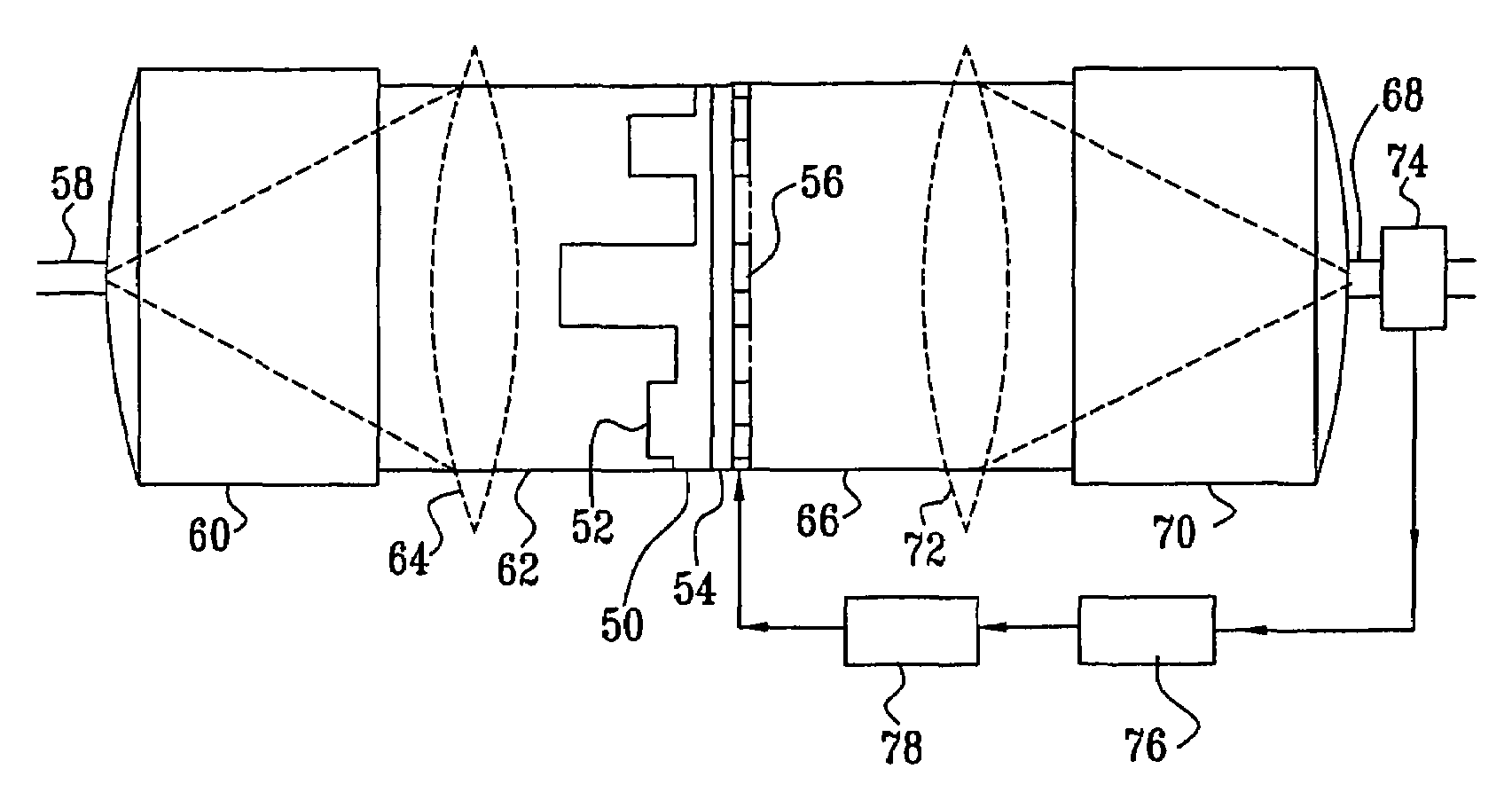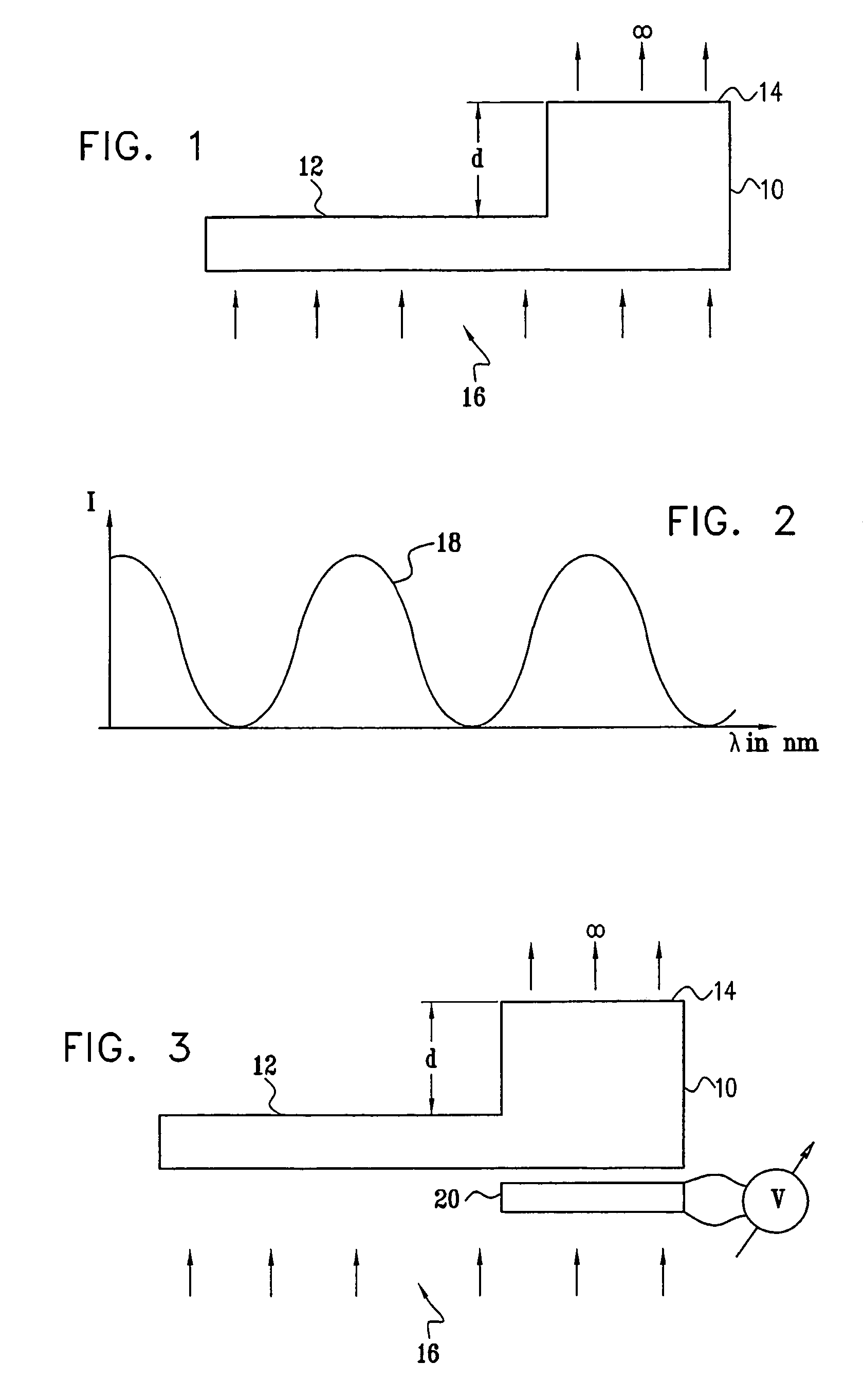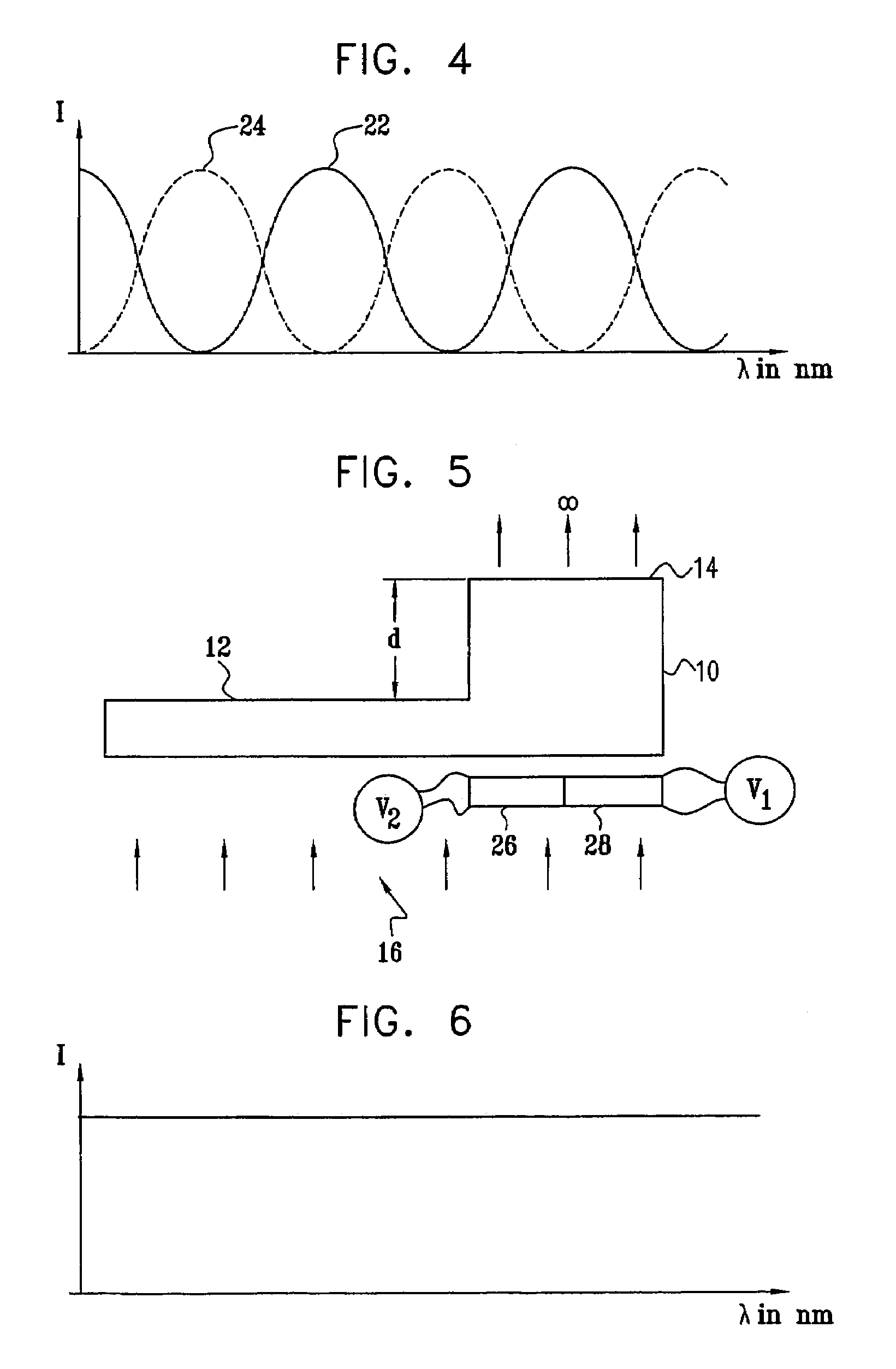Fiber optical gain equalizer
a gain equalizer and fiber technology, applied in the field of gain equalizers, can solve problems such as different profiles, and achieve the effects of low manufacturing cost, simple construction and operation, and simple application of control voltages
- Summary
- Abstract
- Description
- Claims
- Application Information
AI Technical Summary
Benefits of technology
Problems solved by technology
Method used
Image
Examples
Embodiment Construction
[0048]Reference is now made to FIG. 1, which illustrates schematically a stepped substrate 10, as is known in the prior art. The substrate, of total area A, is made of a transparent optical material of refractive index n. The substrate has a step 14 of area a, and of height d, projecting from the overall plane of its surface 12.
[0049]When a plane wave of light 16 of wavelength λ is projected through the substrate, then the light passing through the step undergoes a phase retardation θ, relative to that not traversing the step, given by:
θ=2π / λ·(n−1)d (1)
[0050]The total transmitted intensity at optical infinity, of the light passing through the stepped substrate is then given by the expression:
I=|(A−a)+a exp(iθ)|2 (2)
[0051]As is observed from incorporation of equation (1), the transmission is thus wavelength dependent. It is to be understood that the intensity obtained at optical infinity can be transformed to a near field plane by use of a converging lens, as will be illustrated in...
PUM
| Property | Measurement | Unit |
|---|---|---|
| phase shift | aaaaa | aaaaa |
| phase | aaaaa | aaaaa |
| wavelength | aaaaa | aaaaa |
Abstract
Description
Claims
Application Information
 Login to View More
Login to View More - R&D
- Intellectual Property
- Life Sciences
- Materials
- Tech Scout
- Unparalleled Data Quality
- Higher Quality Content
- 60% Fewer Hallucinations
Browse by: Latest US Patents, China's latest patents, Technical Efficacy Thesaurus, Application Domain, Technology Topic, Popular Technical Reports.
© 2025 PatSnap. All rights reserved.Legal|Privacy policy|Modern Slavery Act Transparency Statement|Sitemap|About US| Contact US: help@patsnap.com



